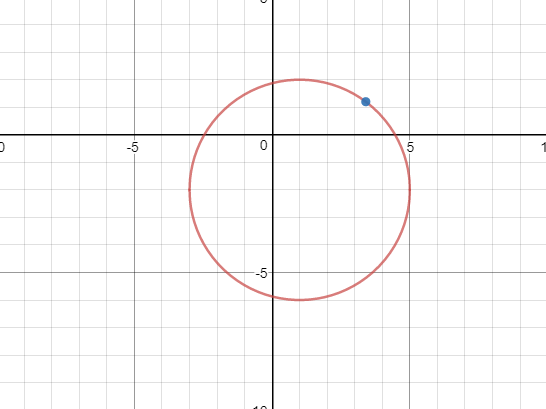A circle has a center at #(1, -2)# and radius of #4#. Does the point #(3.4, 1.2)# lie on the circle?
2 Answers
Yes.
Explanation:
First, find the equation of the circle. The general equation of a circle is
Substituting
#(x-h)^2 + (y-k)^2 = r^2#
#(x-color(blue)1)^2 + (y - color(blue)((-2)))^2 = color(blue)4^2#
#(x-1)^2 + (y+2)^2 = 16#
If the point
#(x-1)^2 + (y+2)^2 = 16#
#(color(red)3.4 - 1)^2 + (color(red)1.2 + 2)^2 = 16#
#2.4^2 + 3.2^2 = 16#
#5.76 + 10.24 = 16#
#16 = 16#
Thus,
Graphing the circle also allows us to verify whether the point lies on it.

Yes.
Explanation:
Let
Circle.
Calling the point
Hence, the pt.

